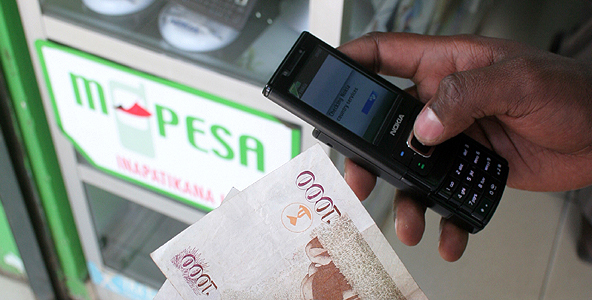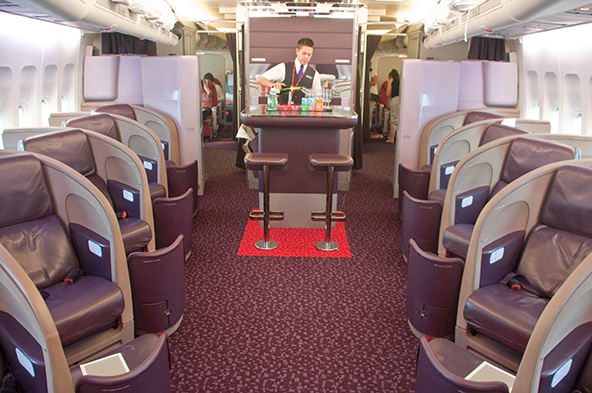M-Pesa and the M-Payment Boom in the World’s Most Troubled Places

It is the sheer misery and lack of infrastructure that makes the world’s poorest and most troubled places the most fertile ground for M-Pesa, the mobile payment service that was first launched in Kenya in 2007, Peter Vanham asserts in his Financial Times blog. Among the countries that it has entered, M-Pesa has been most successful in the least developed ones. Why?
Well, as we and others have pointed out before, M-Pesa’s rapid adoption in Kenya and later in Tanzania and Afghanistan was largely the result of the lack of access to traditional banking services in these places. Vanham acknowledges the poor financial infrastructure in such countries as a powerful propeller for M-Pesa’s growth, but also cites light regulation as a crucial factor for its success. The reverse is true in India and South Africa, he argues, and that is the reason for M-Pesa’s inability to make much headway in these countries. He certainly has a case, but there is a bigger point to be made.
Why Kenya, Tanzania and Afghanistan?
Here is Vanham’s answer:
One metric is access to banking services. Only one in ten Kenyans — and even fewer Tanzanians — have access to financial services. So for many customers, even basic money transfer services are a big innovation. By contrast, 48 per cent of people have such access in India and 46 per cent in South Africa. So there is less repressed demand.
Another big issue is with legal and regulatory frameworks. In many countries, phone companies are not allowed to operate as banks. In Kenya, M-Pesa was able to dodge this problem because it offered a service that no bank could or would provide.
Now, if you live in rural Kenya, it is virtually certain that you don’t have a bank account, but even if you do have one, your bank’s nearest location is likely to be hours away. Moreover, you are very unlikely to have internet access, so you can’t be doing any banking through your laptop. But you do have your phone, so it is no surprise that M-Pesa has grown from zero to fourteen million users in Kenya in five years.
In Afghanistan, as many others have observed before Vanham, there has been another factor that has helped fuel M-Pesa’s fast growth: the service has been used for anti-corruption purposes. When salaries of government employees are paid through M-Pesa, the various officials who may have otherwise handled the cash, keeping a cut for themselves in the process, are cut out of the loop.
Why not Elsewhere?
Then Vanham proceeds to tell us how in countries with higher ratios of “banked” citizens M-Pesa hasn’t been nearly as successful as it has been in Kenya and Afghanistan. But I think his reasoning can be extended still further and beyond India and South Africa, to also cover the U.S. and other Western countries.
It is evident that the two factors most responsible for M-Pesa’s success in Kenya and Afghanistan — a huge amount of pent-up demand and light regulation — go hand-in-hand: when the demand is there, the regulators are accommodating. There is little doubt in my mind that, had the need for the service been as acute in India as it has been in Kenya, India’s central bank would have been just as flexible as its Kenyan counterpart.
In the U.S., on the other hand, the adoption of an M-Pesa-type of service has not been impeded as much by excessive regulation, as it has been by the lack of demand. There is practically no need in the U.S. for this kind of money transfers. However, in segments of the mobile payments industry where demand has been suppressed, the U.S. experience has mirrored the Kenyan one with M-Pesa. Square and Starbucks are two examples.
The Takeaway
Vanham concludes that the world’s most miserable countries may be the most fertile ground for the likes of M-Pesa and I agree. But there is a bigger point to be made here and it is one of demand. Today mobile payments have penetrated countries at all stages of development, to a point that it may be impossible to name one that is yet to be conquered. And the choice of a mobile payment technology in a given country has inevitably been determined by the unique needs and preferences of its citizens. Just as there is no place for M-Pesa on the U.S. market, there is no need for Square in Kenya.
Image credit: Kenyauptodate.blogspot.com.



M-Pesa is a uniquely third-world phenomenon that holds no lessons for us. It was successful in Kenya because there was nothing else available. In the U.S. the options are many and an M-Pesa-like model wouldn’t be competitive.
M-Pesa is a huge success story and there is no surprise that it all happened in Kenya where there is a lot of growth and innovation going on.
Kenya, Tanzania, Afghanistan and South Africa are not the only countries with mobile money solutions. In Kenya, M-PESA is gradually evolving from a mobile money transfer solution towards a banking solution, with deepening linkages into the banking sector.
The developed world cannot copy and paste the success in the developing world, but there is not denying that money likes being mobile. I am convinced that there is even greater opportunity in developed countries than in developing countries. Furthermore, a sizable proportion of remittances coming from developed countries are made by informal workers working outside the formal banking system